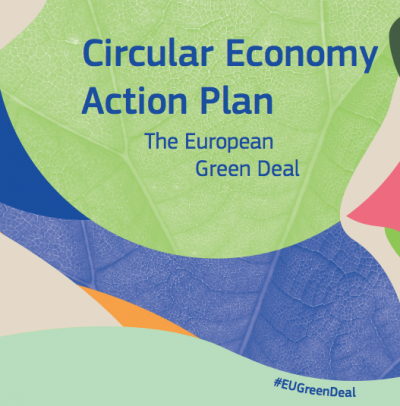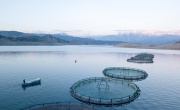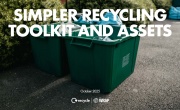EU unveils Circular Economy Action Plan
The European Commission has today (11 March) published its new Circular Economy Action Plan (CEAP), outlining measures to ensure that products are designed to last longer and are easier to reuse, repair and recycle.

CEAP was proposed as part of the European Green Deal, agreed by MEPs in January, which commits the EU to achieving carbon neutrality by 2050.
At the heart of the European Green Deal, the Action Plan aims to decouple economic growth from resource use, presenting a set of initiatives to establish a sustainable framework for products, services and business models.
With regards to sustainable product design, the Commission will propose a legislative initiative to widen the EU Ecodesign Directive – which currently regulates energy efficiency of energy-related products – to cover a broader range of products. The Commission will consider establishing a set of sustainability principles to regulate the durability, reusability and reparability of products, while increasing recycled content, restricting single-use and introducing a ban on the destruction of unsold durable goods.
CEAP also includes measures to empower consumers to make sustainable choices, for example by providing access to reliable information on issues such as repairability and durability, and establishing a new ‘right to repair’.
The strategy focuses particularly on resource-intensive sectors, outlining proposals to deliver circularity for electronics and ICT, batteries and vehicles, packaging, plastics, textiles, construction and buildings, and food.
Notably, CEAP lays out plans to ensure that all packaging on the EU market is reusable or recyclable by 2030, by driving design for re-use and recyclability, and reducing the complexity of materials and polymers used.
Building on the EU Plastics Strategy, the Commission will propose mandatory requirements for recycled content, restrict the use of microplastics and develop a policy framework on the use of biodegradable plastics.
Commenting on the Action Plan, Executive Vice-President for the European Green Deal, Frans Timmermans, said: “To achieve climate-neutrality by 2050, to preserve our natural environment, and to strengthen our economic competitiveness, requires a fully circular economy. Today, our economy is still mostly linear, with only 12 per cent of secondary materials and resources being brought back into the economy.
“Many products break down too easily, cannot be reused, repaired or recycled, or are made for single use only. There is a huge potential to be exploited both for businesses and consumers to make sustainable choices for their own benefit and that of the environment.”
Joan Marc Simon, Executive Director of Zero Waste Europe, added: “The CEAP is a nice patchwork of initiatives pointing in the right direction. Now the EU has to glue the pieces together to ensure that circular zero waste activities are more convenient and economic than the current, failing, linear ones.”
“A turning point for sustainability”
The Action Plan has been welcomed by industry professionals, with the European Environmental Bureau (EEB) praising the strategy as the ‘most ambitious and comprehensive proposal ever put forward’.
Stephane Arditi, EEB Policy Manager for the Circular Economy, said: “The Circular Economy Action Plan can be a turning point for sustainability and climate action in Europe, which will hopefully inspire the rest of the world. It shows that the systemic change the people and the planet need is within reach.
“Now the EU institutions and governments need to turn these promises into laws to ensure the absolute reduction in carbon emissions and resource use. We only have one planet and yet we consume resources as if we had three. It’s time to do more with less.”
Annick Carpentier, Director General of the Alliance for Beverage Cartons and the Environment (ACE), commented: “We see the new Circular Economy Action Plan as a unique opportunity to scale up the contributions of a circular economy to climate neutrality by incentivizing the use of low carbon and circular products.”
EU-wide targets
While CEAP has been widely praised for its focus on sustainable manufacturing, concerns have been raised with the lack of binding targets for the reduction of resource use.
Carpentier explained: “We call on policymakers to establish EU-wide and national collection targets for beverage cartons that would provide a strong incentive to further investment and innovation in the recycling infrastructure.”
Arguing that the EU has missed an opportunity in establishing targets for resource use and waste generation, Arditi said: “The proposal ticks almost all boxes, but does not explicitly target Europe’s over-consumption of resources. Without binding EU-wide targets, governments risk losing momentum and neglecting the fundamental objective of reducing our consumption footprint.”
“Out of touch with reality”
Environmental campaign group Friends of the Earth has criticised the Action Plan, arguing that the lack of targets will result in failure to prevent resource overconsumption.
Meadhbh Bolger, resource justice campaigner at Friends of the Earth Europe, said “The Von der Leyen Commission’s plan for a circular economy is out of touch with the reality and urgency of the planetary emergency.
“It will fail to reduce resource consumption – as the previous one did – because it is written to satisfy the demands of endless economic growth, over the needs of people and the natural world. Our overconsumption of resources is wrecking the environment and communities around the world, and instead of setting targets to reduce this, the Commission has buried its head in the sand and merely promised to ‘monitor’ our consumption.”
You can view the Circular Economy Action Plan on the European Commission website.










